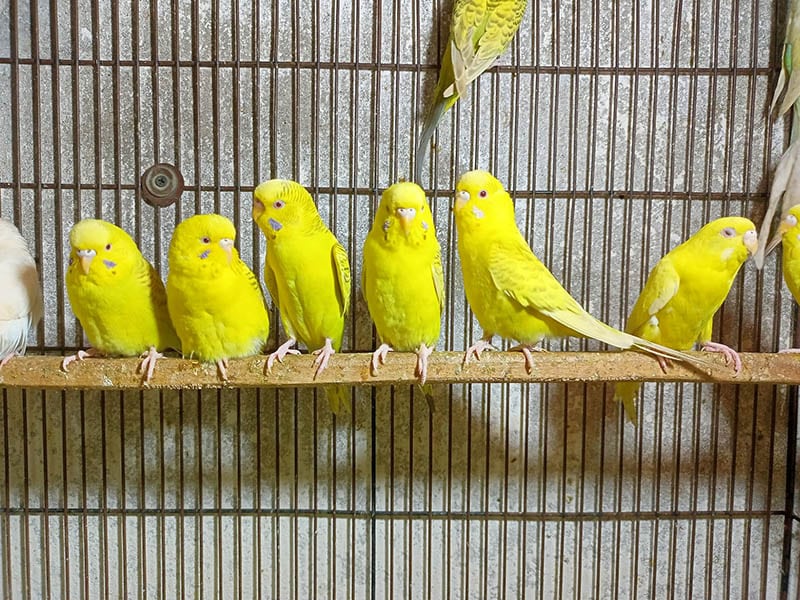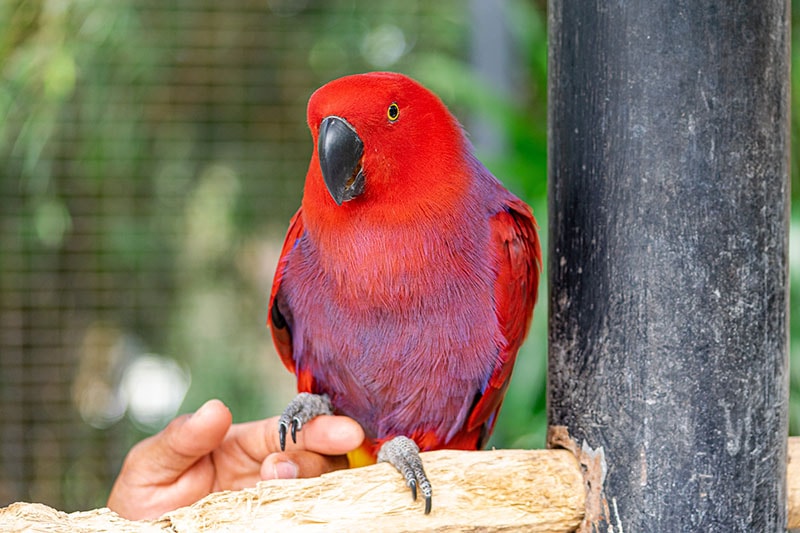Why Do Parrots Mimic People? Interesting Facts & FAQ
By Adam Mann
Updated on
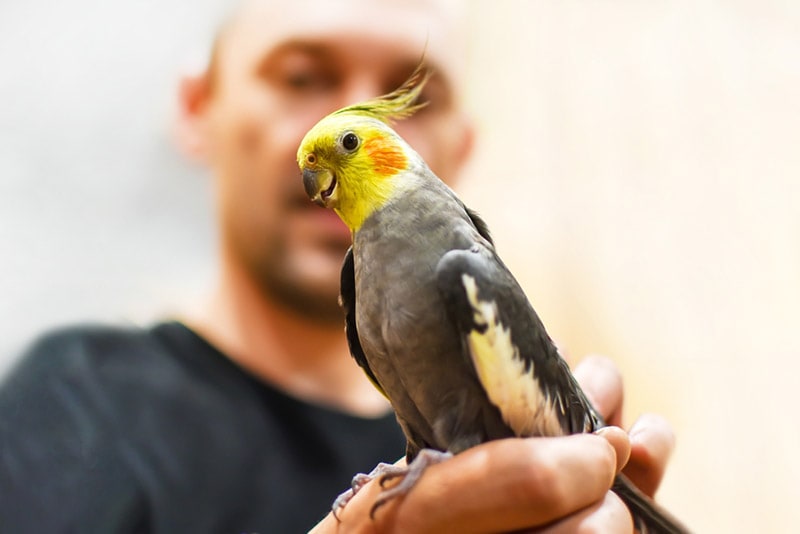
Click to Skip Ahead
When you think of a parrot, it doesn’t take long for you to start remembering that they can mimic human speech. But why is this a thing? And where does this unique behavior come from? The truth is that scientists and researchers don’t know for sure where this behavior comes from, but they do have some guesses, which usually stem from them benefitting from this behavior in various ways.
Why Do Parrots Mimic People?
While researchers and scientists don’t know for sure why parrots mimic people, they do have some great ideas on why they think they might.
Wild parrots live in rainforests where they’re constantly surrounded by different noises and sounds, and in the wild, they communicate with other members of their flocks by creating different sounds. The more sounds they can create, the more they can communicate, rewarding diversity and mimicking.
In captivity, parrots don’t have all these wild noises to listen to, and their comparatively mundane-sounding environments leave them with extra brain power. They use this time to copy the sounds around them as a form of entertainment, and when you reward the behavior, it’s also a way to bond with you.
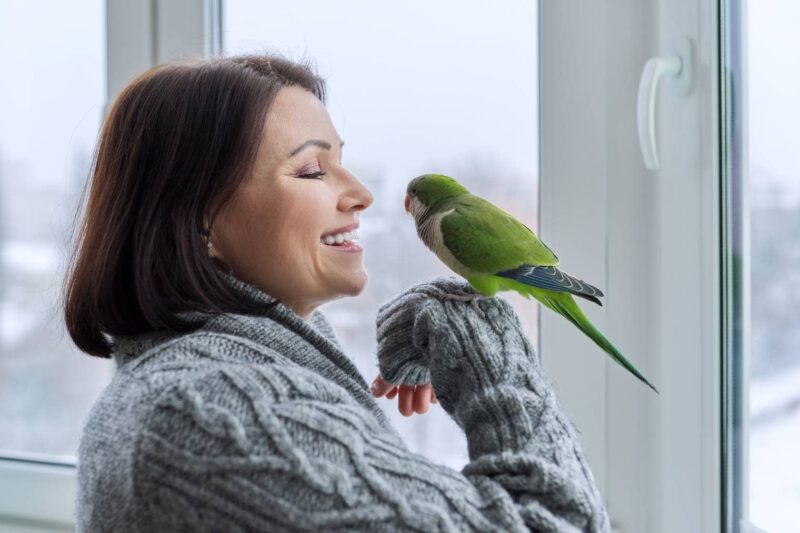
Bird Species That Excel at Mimicking People
Some parrot species are all about mimicking, while others require a bit more work to get there. If you’re looking for a parrot that excels at mimicking, we’ve highlighted five great choices for you to consider.
1. Parakeets
Parakeets, lovingly referred to as budgies, are smaller birds that excel at mimicking. In addition to some great mimicking skills, parakeets also have the advantage of being significantly smaller, which makes them a lot easier to care for.
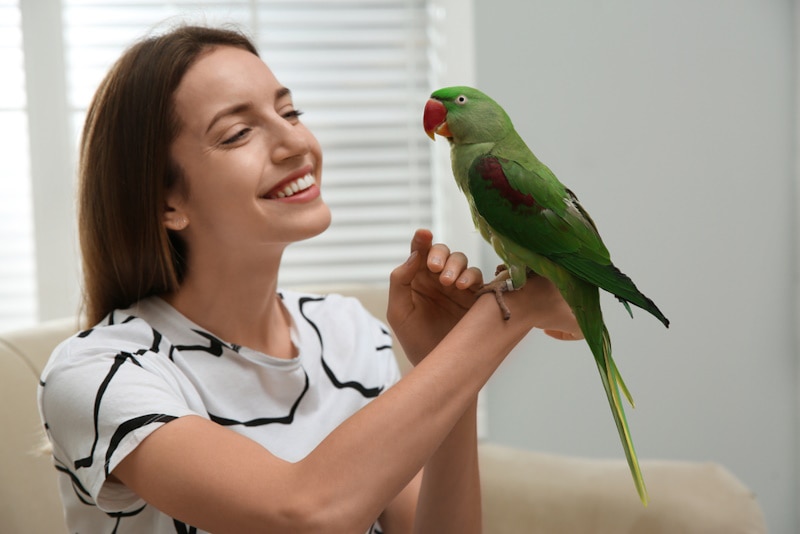
2. African Grey Parrots
African grey parrots are large birds with extremely long lifespans, which means the time you spend training them will last for decades. They excel at mimicking; just take the time to completely bond with them for the best possible results.
3. Amazon Parrots
The Amazon parrot is another large parrot breed that does a great job of mimicking. Not only can these birds mimic, but they do it in a way that’s incredibly easy to understand. They love learning tricks, and the more time you spend with them, the better their skills will be.
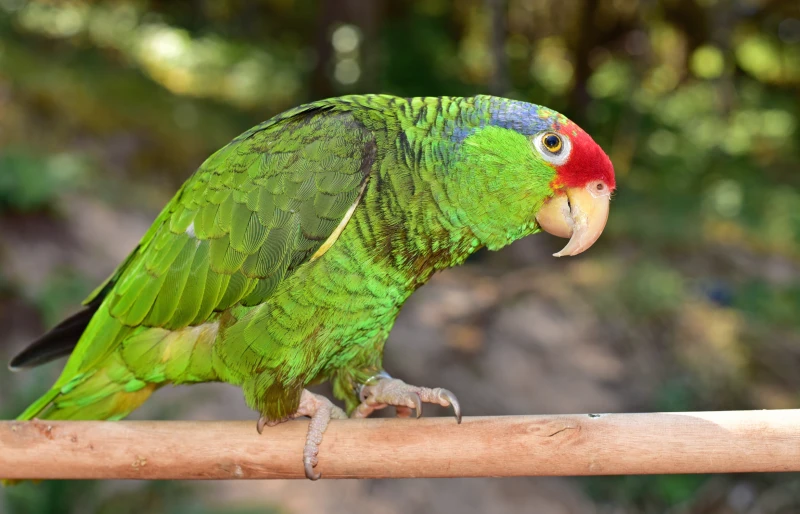
4. Cockatoos
While some people think it can be tough to train a cockatoo to talk, the truth is that it can be harder to hear and understand what they’re saying. They’re soft-spoken birds, but they do have some pretty impressive vocabularies once they start bonding with their owner.
5. Severe Macaw
Not only does the Severe macaw have a big vocabulary, but they also have a huge personality that makes them a joy to have around. They don’t just repeat a word or two; they can also mimic phrases and even sing! They’re not always the easiest to understand, but the more you get to know them, the easier they are to talk to.

Tips for Training Your Parrot to Mimic
Whether you have a small budgie or a large African grey parrot, they won’t start mimicking you the very first day. In fact, if you don’t do anything to encourage the behavior, you might never get past a few randomly uttered words and phrases.
With that in mind, we’ve highlighted a few different things you can do to encourage mimicking and train your parrot to copy you on command.
1. Build a Relationship
This is by far the most important thing you need to do, and it’s also the most time-consuming. Spend a few hours with your parrot each day, simply trying to get them to like you, and once they fully bond with you, they’ll be more likely to start copying you.
Don’t expect this to happen overnight, and really take the time to get to know them and hang out with them before expecting them to start copying what you’re saying.
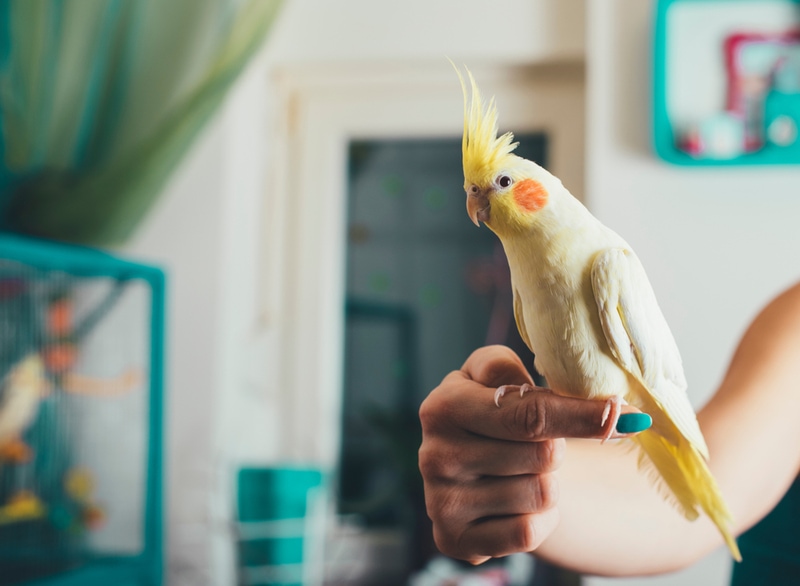
2. Repeat Sounds
Human speech isn’t always the easiest for your parrot to copy, and before they even realize how to do it, they need to recognize the sound. Repeat sounds and phrases for them throughout the day. That way, they have as much exposure as possible.
3. Reward Positive Behavior
Once your bird mimics a word or sound, you need to go out of your way to reward the behavior. Once your parrot starts to recognize the behavior as good and something that gets them a reward, they’ll be far more likely to repeat it.
Final Thoughts
Now that you know a bit more about parrots and their mimicking behavior, you can really sit back and enjoy hearing them doing it, knowing that no one really knows why! It’s a complex and interesting behavior, and while we don’t know for sure why they do it, scientists suspect that it’s simply a way of communicating with their flock in the wild, which thus aids in their protection.
Featured Image Credit: ninaveter, Shutterstock


